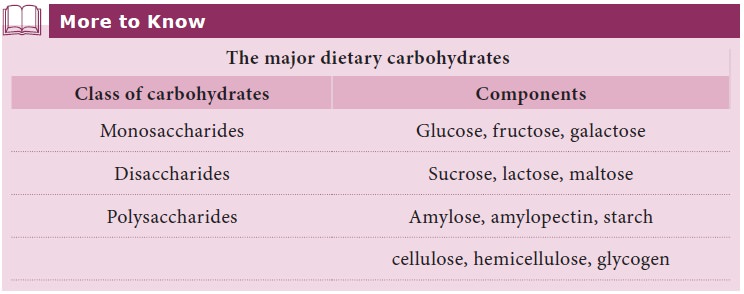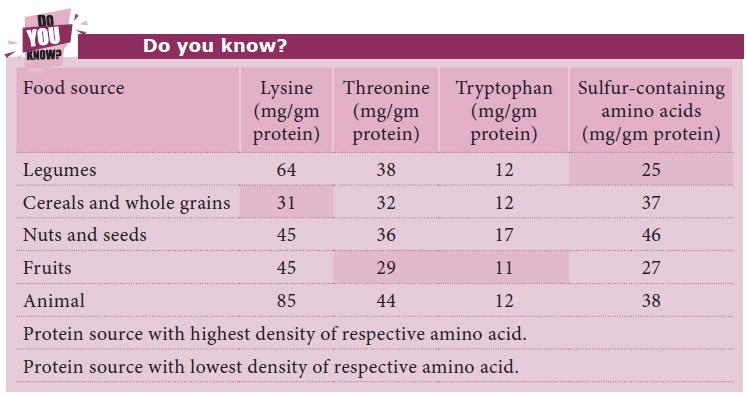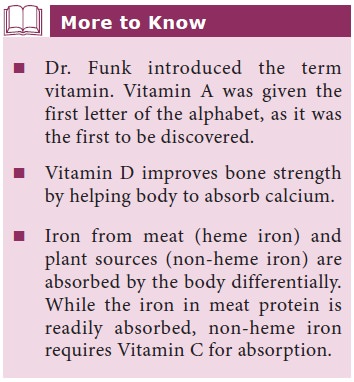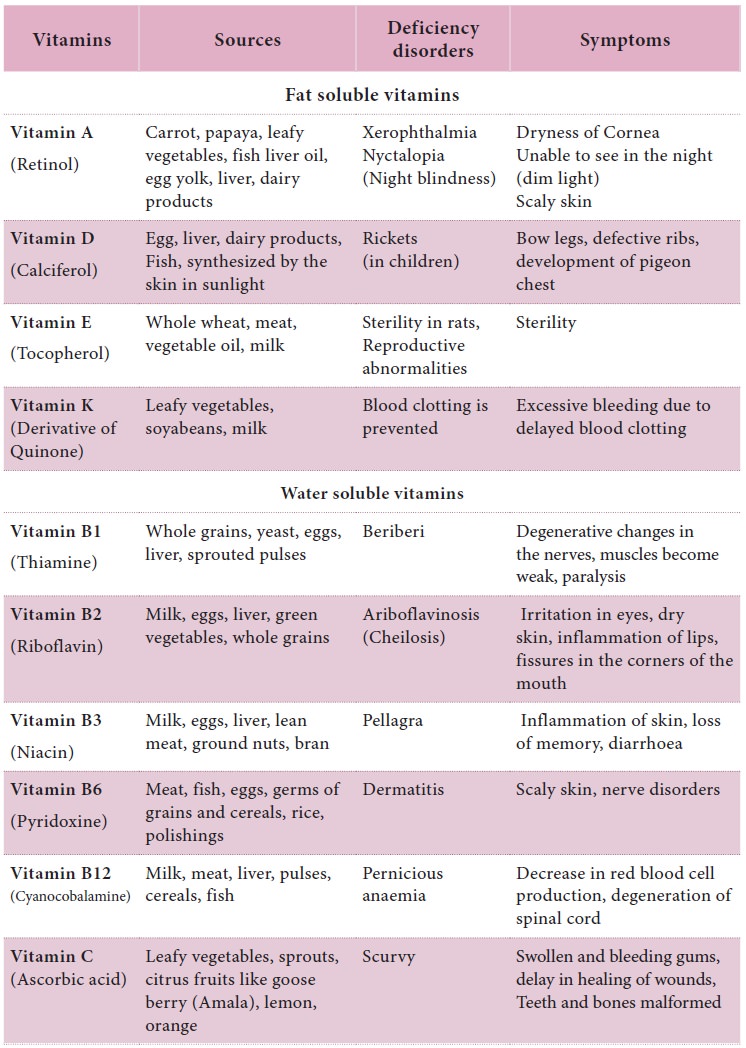Chapter: 9th Science : Health and Hygiene-Food for Living
Classes of Nutrients
Classes of Nutrients
Nutrients are classified into six major groups as follows
· Carbohydrates
· Proteins
· Fats
· Vitamins
· Minerals
· Water
1. Carbohydrates
Carbohydrates are organic compounds composed of carbon, hydrogen, and oxygen in a ratio of 1:2:1. Carbohydrates are the chief source of energy. Edible sugar, starch, cellulose

are few examples for carbohydrates. Glucose is a monosaccharide, edible sugar is a disaccharide and cellulose in vegetables is a polysaccharide.
Sucrose is found in honey, sugarcane and fruits. Starch is found in rice, potatoes and bread. Glycogen is stored in our liver and muscles. Plant cell wall is made up of cellulose and other complex organic compounds.
2. Proteins
Proteins are essential nutrients for the human body. They are one of the building blocks of body tissue, and can also serve as a fuel source. As a fuel, proteins provide maximum energy than carbohydrates which provide 4 kcal (17 kJ) per gram and lipids which provide 9 kcal (37 kJ) per gram. The most important aspect and defining characteristic of protein from a nutritional standpoint is its amino acid composition.
Proteins are polypeptide chains made of amino acids linked together by peptide bonds. During the process of digestion, proteins are broken down in the stomach and small intestine to smaller polypeptide by action of proteases. is is crucial for the absorption of the essential amino acids that cannot be biosynthesized by the body.
There are nine essential amino acids (EAA) which humans must obtain from their diet in order to prevent protein-energy malnutrition. They are phenylalanine, valine, threonine, tryptophan, methionine, leucine, isoleucine, lysine and histidine.
3. Fats
Fats also known as triglycerides which are esters of free fatty acid chains and glycerol. Fat is an important foodstu for many forms of life and serve in both structural and metabolic functions. They are a necessary part of the diet of most heterotrophs (including humans). Lipases are enzymes involved in the break down of fats in the small intestine during the process of digestion .
Essential fatty acids cannot be synthesized in the body and provided through diet. There are two essential fatty acids (EFAs) in human nutrition: alpha-linolenic acid (omega-3 fatty acid) and linoleic acid (omega-6 fatty acid).
4. Vitamins
Vitamins are vital nutrients, required in minute amounts to perform special functions to maintain a healthy body. An organic chemical compound (or related set of compounds) is called a vitamin when the organism cannot synthesize the compound in sufficient quantities, and it must be obtained through the diet.

5. Mineral nutrients
In the context of nutrition, a mineral is a chemical element required as an essential nutrient by organisms to perform various functions necessary for life. Minerals originate in the earth and cannot be made by living organisms. Minerals are very important to maintain the physiological processes in our body. They are the constituents of teeth, bones, tissues, blood, muscle and nerve cells.

The five major minerals in the human body are calcium, phosphorus, potassium, sodium and magnesium. All of the remaining elements in the human body are called “trace elements”, such as sulfur, iron, chlorine, cobalt, copper, zinc, manganese, molybdenum, iodine and selenium
6. Water
Water is vital as a solvent in which many of the body’s solutes dissolve and also an essential part of many metabolic processes within the body. Metabolism include two process namely anabolism and catabolism. In anabolism, water is removed from molecules (through energy requiring
Vitamins, their sources, deficiency disorders and symptoms

In catabolism, water is used to break bonds in order to generate smaller molecules (e.g. glucose, fatty acids and amino acids to be used as fuels for energy use or other purposes). Without water, these particular metabolic processes could not exist.
Related Topics